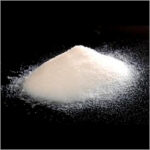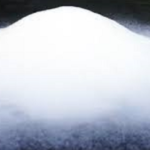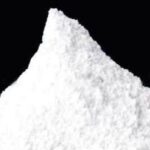Silica Grits Pure (Grit-90)
White Silica Sand, also known as industrial sand or quartz sand, is a versatile material with a wide range of uses and applications in construction and various other industries. Its high purity and quality make it valuable for numerous purposes.
Here are some common uses and applications of white silica sand:
Concrete Production:
White silica sand is used as a key component in the production of concrete and mortar. It adds strength and durability to the mixture while reducing shrinkage and cracking.
Mortar Mix:
Silica sand is often incorporated into mortar mixes to improve their workability and adhesive properties, making it easier to bond bricks and stones together.
Sandblasting:
One of the most well-known uses of silica sand is in sandblasting. It is used to clean and prepare surfaces by removing paint, rust, and other contaminants. The abrasive nature of silica sand makes it effective for this purpose.
Glass Manufacturing:
High-purity white silica sand is a primary raw material in the production of glass, including bottles, windows, and optical lenses. It provides clarity and strength to the glass.
Foundry Casting:
In the foundry industry, silica sand is used as a mold and core sand for metal casting. It helps create precise and smooth casting molds.
Filtration Media:
White silica sand is used as a filtration media in various applications, including water treatment, pool filtration, and wastewater treatment. It effectively removes impurities and particles from liquids.
Sports and Recreation:
Silica sand is often used in sports fields and golf course bunkers to create a smooth and firm playing surface. It is also used in the construction of volleyball courts and sandboxes.
Roofing Granules:
In the roofing industry, white silica sand is coated with ceramic granules to enhance the weather resistance and UV protection of roofing shingles.
Ceramics and Pottery:
It is used as a raw material in the production of ceramics, pottery, and porcelain products due to its high heat resistance and purity.
Paints and Coatings:
Silica sand is used as a filler and extender in paints and coatings to improve texture, durability, and coverage.
Abrasive Applications:
Besides sandblasting, white silica sand is used in various abrasive applications, such as grinding, polishing, and cutting, in industries like metalworking and jewelry making.
Oil and Gas Industry:
Silica sand is employed in hydraulic fracturing (fracking) operations as a proppant to prop open fractures in shale rock, allowing the extraction of oil and natural gas.
Soil Amendment:
Silica sand can be added to soil as an amendment to improve its drainage and aeration properties, particularly in horticulture and landscaping.
Electronics and Semiconductor Manufacturing:
Ultra-pure silica sand is used in the semiconductor industry to produce silicon wafers and electronic components.
Refractory Materials:
In refractory applications, silica sand is used to manufacture firebricks and other heat-resistant materials for furnaces and kilns.
It’s important to note that the specific requirements for silica sand may vary depending on the intended application, with different industries and processes requiring sand with specific characteristics, such as size, purity, and shape.
White silica sand is commonly used in sports ground and turf applications for its unique properties that contribute to the construction and maintenance of high-quality playing surfaces. Here’s how white silica sand is used in sports ground and turf applications:
Turf Infill: Silica sand is often used as an infill material for artificial turf or synthetic grass fields. When installed between the synthetic turf fibers, it provides stability and support to the grass blades, helping them stand upright and maintain their natural appearance. It also improves the playability and safety of the field by offering cushioning and reducing impact injuries.
Traction and Ballast: Silica sand is spread on natural grass fields and playing surfaces to enhance traction and ballast. It can improve the grip of athletic shoes and provide a stable surface for athletes, reducing the likelihood of slipping and injuries.
Golf Course Bunkers: Golf course bunkers use white silica sand to create aesthetically pleasing and consistent sand traps. The fine and uniform grain size of silica sand ensures a fair challenge for golfers while maintaining a visually appealing appearance.
Beach Volleyball Courts: Silica sand is the preferred choice for constructing beach volleyball courts due to its fine, clean texture. It provides a soft-landing surface for players, reducing the risk of injury, and offers good ball bounce characteristics.
Athletic Tracks: In some cases, silica sand is incorporated into the construction of athletic tracks to enhance drainage and reduce compaction, which can help maintain a stable and resilient track surface.
Putting Greens: For golf putting greens, high-quality white silica sand is often used to create smooth and consistent putting surfaces. It helps to control the speed and roll of the golf ball.
Maintenance and Topdressing: Silica sand is used for topdressing natural grass sports fields to improve soil aeration, drainage, and wear resistance. It can also help level uneven surfaces and promote healthy grass growth.
Dressing for Natural Grass Fields: In natural grass sports fields, silica sand is sometimes mixed with soil to improve root zone structure, enhance drainage, and reduce compaction. This promotes healthier grass growth and helps maintain a durable playing surface.
When using white silica sand for sports ground and turf applications, it’s crucial to choose a sand with the appropriate particle size and quality. The sand should be free from contaminants, have good drainage properties, and be regularly maintained to ensure it continues to meet the required performance standards.






